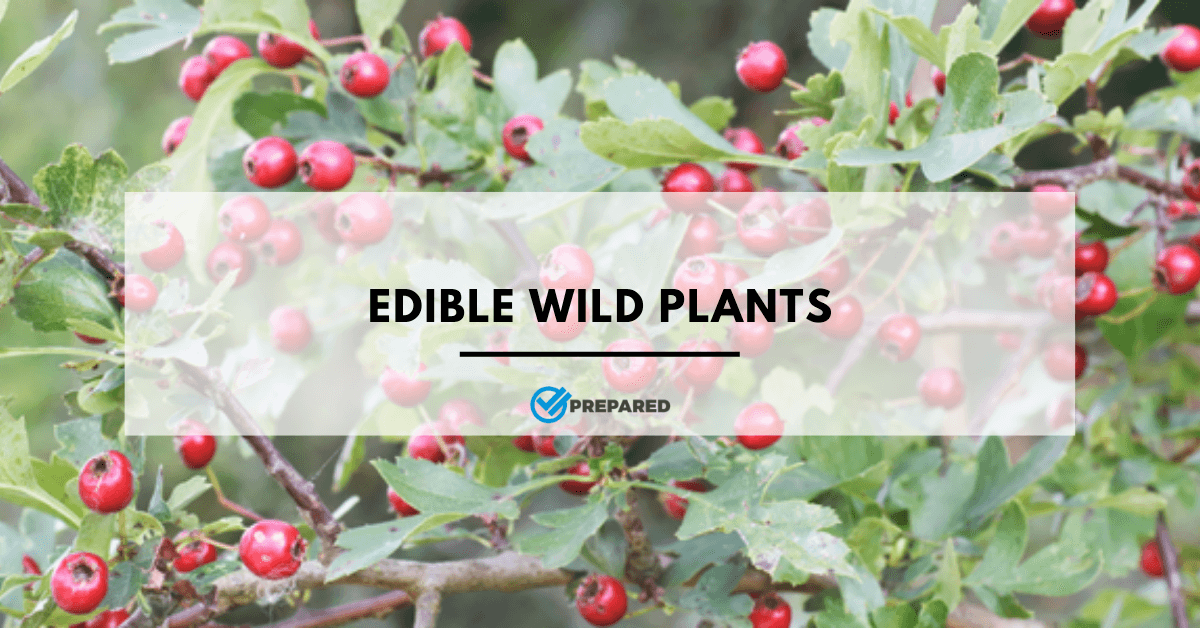Food in the wild seems to be a readily discussed topic. There is much discussion about fishing, trapping, and even fashioning spears or bows to hunt large game. But do you know how to find edible wild plants?
First and foremost, food is one of my lowest priorities in survival. I can make it hours without protection from the cold and rain, days without water, and weeks without food. However, there are benefits to finding food. Calories give you focus to prevent injury and strength to complete tasks. They also add a level of morale that you just cannot achieve while starving.
Levels of Balance
More importantly, everything in survival is about two levels of balance. One is risk versus reward, and the other is calories expended versus calories gained. When it comes to risk versus reward, fishing and hunting are low on my list. Many of the animals that you may be hunting are large enough to injure you in the process. In my area hogs, deer, bear, and coyote are all dangerous when cornered. Fishing can be dangerous because falling in the water could cause injury, drowning, or hypothermia.
As for calories expended versus calories gained, all are risky on different levels. Trapping requires hours of carefully setting traps and then hours of daily checking your traps. It is also very difficult to be successful without years of experience. Fishing is hit and miss. It often requires all of your attention keeping you from other tasks that need to be completed. Hunting requires constant hiking, and the payoff is rare.
Why Consider Edible Wild Plants? Why Not?
Collecting edible wild plants is one of the least risky and most rewarding ways to collect food in the wild. It requires minimal effort, there is minimal risk of injury, and you are almost always guaranteed to find something. In fact, in most cases, I find edible wild plants along my path while I am completing other tasks.
However, the only way wild edibles can be a safe source of food is through proper identification. Eating the right plants can give you sugars, proteins, vitamins, minerals, and hydration. Eating the wrong plants can cause severe illness or death.
General Identification of Edible Wild Plants
Many people are hesitant to cover this subject because plant identification is very regional. Most edible wild plants are unique to certain areas, and misidentification can be deadly. However, there are a few rules that you can use anywhere in the world.
- Berries – Many people go straight to berries for calories, but you have to know your odds. Black or blue colored berries are safe 90% of the time. Red berries are safe 50% of the time. White or yellow berries are almost always toxic. The ones that I almost always go for are blueberries, autumn olive berries, and blackberries. They are common throughout much of the world.
- Mushrooms – The best I can tell you is to stay away from mushrooms unless you are an expert. I am not. The wrong mushroom can kill you in hours. The only mushroom I will eat in the wild is the morel mushroom which is also found on several continents.
- Nuts – Most nuts in the wild are either rotten or highly acidic. They are rarely toxic but may upset your stomach. If they do not look rotten, try a bit on your tongue. If it is bitter, they need to be boiled and strained two or three times before being eaten. In many cases, they are not worth the effort.
- Leafy Greens – There are a few general warning signs on leafy greens, and also a process to test for toxicity. Any plants that have a foul smell, waxy coating, or thorns are probably best to avoid.
Testing Edible Wild Plants
There are four steps to testing out a plant before consuming it for a meal. First, break some up, rub the liquid on the inside of your wrist, and wait 15 minutes. If there is no reaction, apply the same paste to the inside of your lip, and wait a few minutes. If there is no reaction, chew up the paste and spit it out, but do not swallow. If the taste is foul, you are probably best to move on. It may not kill you, but will likely upset your stomach. After 15 more minutes without a reaction, you can try a larger piece.
There are a few leafy greens that can be found around the world. Dandelions, wood sorrel, clover, chickweed, henbit, and plantain can be found in most of the world, and in some cases even under the snow.
A Final Note On Edible Wild Plants
One other precaution you can take with edible wild plants is to leech it. This is the process of boiling the plant material and then draining the water. You should repeat this process two to three times before consuming the plant. In most cases, I can find raw greens with which I am comfortable. However, if I have serious doubts, I end up making a greens soup by adding water to the leeched greens.
You have to be the one to decide if you know enough to safely eat these plants. My suggestion is to become familiar with plants in your area as well as plants that are common around the world. Try out a few on your next hiking or camping trip, and find your favourites.
Edible Wild Plants: Do you want to expand your outdoor survival knowledge? Consider this Field Guide with over 200 natural foods or this Guide to Identifying, Harvesting, and Preparing Edible Wild Plants.

Chris was born and raised in South Africa and has worked in the field of risk management, organisational resilience, and business continuity for more than a decade. During his career he has seen how private and public sector organisations benefit from effective risk management and business continuity planning. Realising that families and communities can also benefit from the same tools, methodologies, and principles, he started Prepare with Foresight.
Prepare with Foresight was launched to assist individuals and families to have the peace of mind that they will be able to recover from and successfully adapt to the consequences of adverse events.

